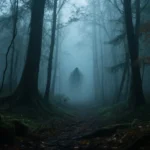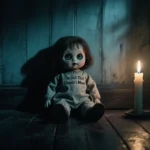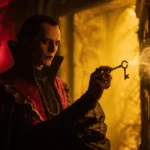Now Reading: American Horror Story Season 13: Full Cast Revealed
-
01
American Horror Story Season 13: Full Cast Revealed
American Horror Story Season 13: Full Cast Revealed
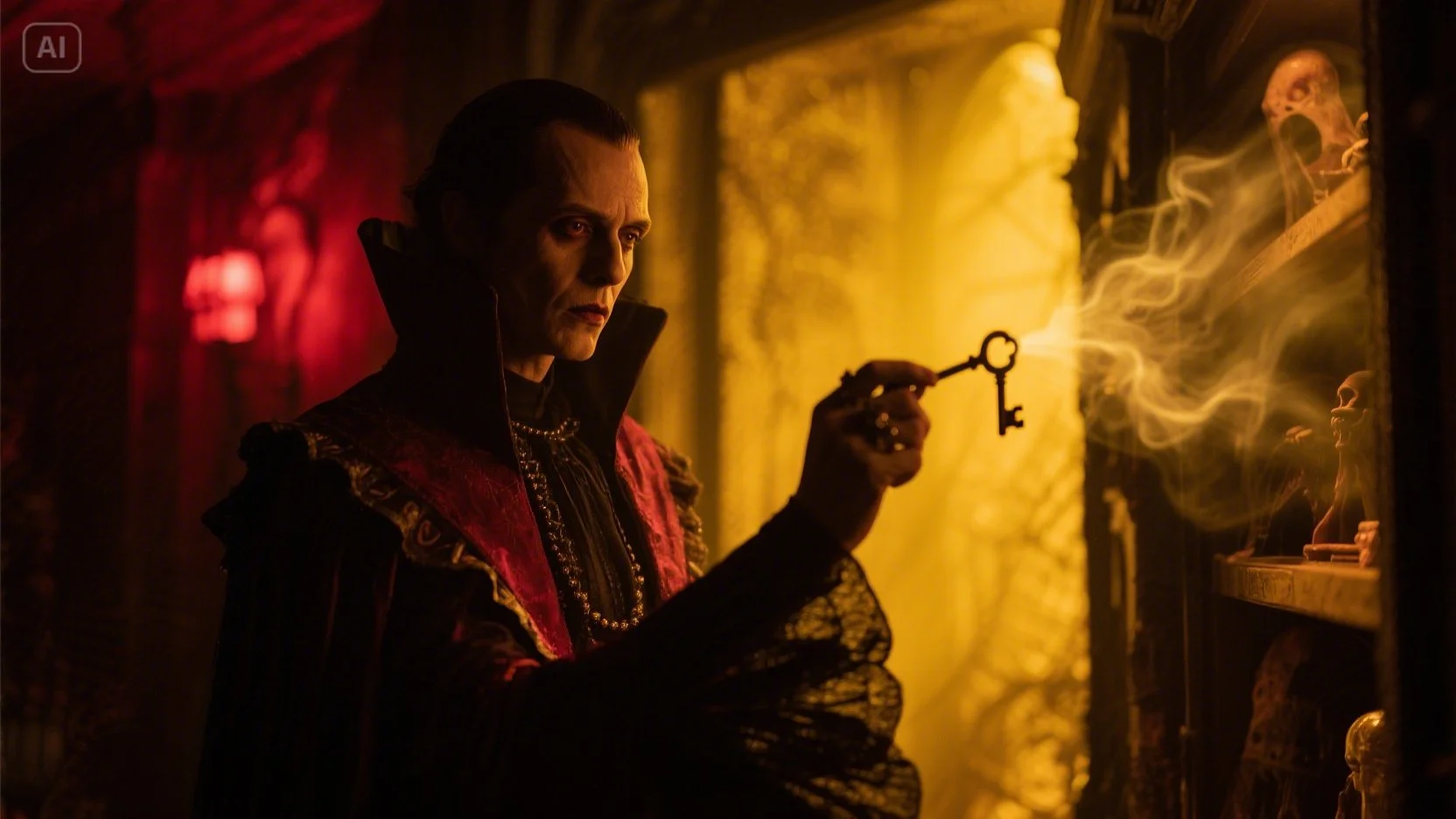
The antique television flickered to life at exactly 3:33 AM, its static-filled screen casting eerie shadows across Rebecca’s cramped apartment. She hadn’t touched the remote. She hadn’t even been awake. But there it was, broadcasting something that shouldn’t exist—a lost episode of American Horror Story Season 13 that never aired.
Rebecca sat up in bed, her heart hammering against her ribs. The show had ended months ago, yet here was footage she’d never seen before. The opening credits rolled with familiar haunting music, but something felt wrong. Terribly wrong.
As a graduate student studying media psychology, Rebecca had always been fascinated by how horror content affected viewers. Her thesis explored the psychological impact of anthology series, particularly how shows like American Horror Story created lasting impressions through their seasonal storytelling format. She’d spent countless hours analyzing viewer reactions, tracking how different seasons resonated with audiences.
Tonight, however, her academic interest was turning into something far more personal and terrifying.
The Episode That Never Was
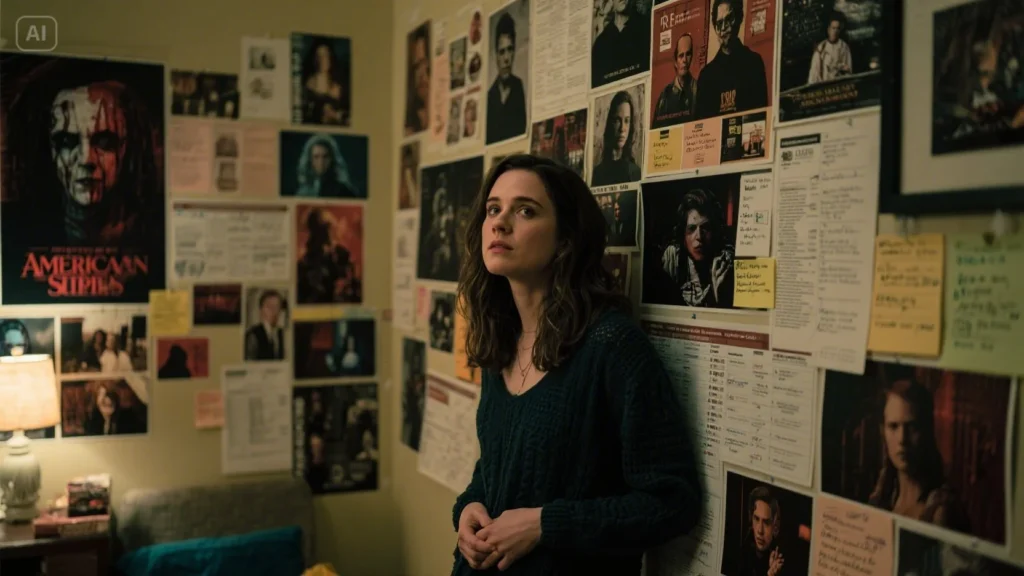
As a devoted fan who had watched every American Horror Story season 13 in order, Rebecca knew the anthology series inside and out. She’d analyzed every theme, dissected every character arc, and theorized about connections between seasons. Her apartment walls were covered with printed screenshots, episode guides, and detailed notes about recurring actors and hidden Easter eggs.
But this episode was completely foreign to her extensive knowledge.
The screen showed a collector’s room filled with vintage televisions, each one playing scenes from different horror shows. Dozens of screens flickered with images from classic B-movies, modern psychological thrillers, and what appeared to be home recordings of people watching television alone in darkened rooms.

In the center sat a gaunt man with hollow eyes, methodically switching between channels with an ornate remote control. His fingers were unnaturally long, and his skin had a translucent quality that made him appear almost ghostly.
“Welcome to my collection,” the man whispered directly into the camera. “I’ve been waiting for someone like you, Rebecca.”
Her blood turned to ice. The character had spoken her name.
Rebecca grabbed her research notes, frantically flipping through pages of American Horror Story episode summaries. She’d documented every single episode across all seasons, including deleted scenes and behind-the-scenes footage that had leaked online. This scene, this character, this entire episode—none of it existed in any official capacity.
Yet somehow, the collector knew intimate details about her life, her research, her obsession with horror television.
When Fiction Bleeds Into Reality
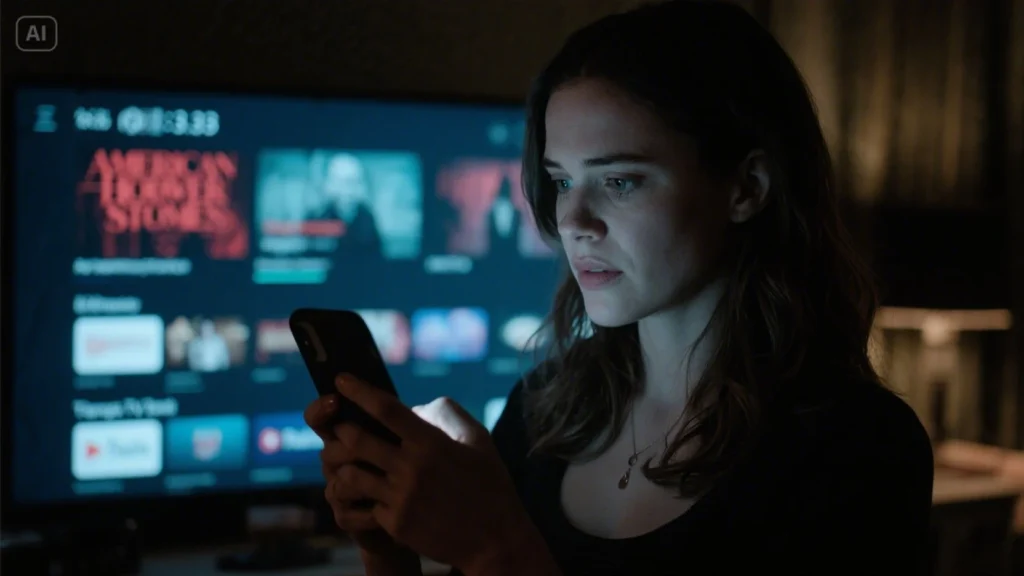
Rebecca grabbed her phone to check the American Horror Story network listings. Nothing. No late-night reruns, no special episodes. According to every streaming platform and TV guide, the show wasn’t broadcasting anywhere at 3:33 AM.
She checked social media platforms where fans typically discussed new content. No mentions of a surprise episode, no leaked footage, no excited posts about unexpected American Horror Story content. The official show accounts had been silent for weeks.
Yet the episode continued playing with crystal-clear quality.
The collector on screen began describing his obsession with capturing “real” horror stories. He explained how traditional television had become predictable, sanitized, unable to deliver genuine terror. His solution was more direct and infinitely more disturbing.
“The beauty of modern horror,” he continued, his eyes seeming to peer directly at Rebecca, “is that the audience never realizes when they become part of the show. You think you’re watching fiction, but I’m creating reality.”
Rebecca tried to turn off the television. The remote didn’t work. She pressed the power button directly on the TV. Nothing. She unplugged the entire unit from the wall, watching the cord fall harmlessly to the floor.
The screen remained bright, the episode continuing without any power source.
Panic began to set in as Rebecca realized she was dealing with something beyond normal technological malfunction. This wasn’t a hidden episode or leaked footage—this was something that operated outside the laws of physics and reality.
The Collector’s Obsession
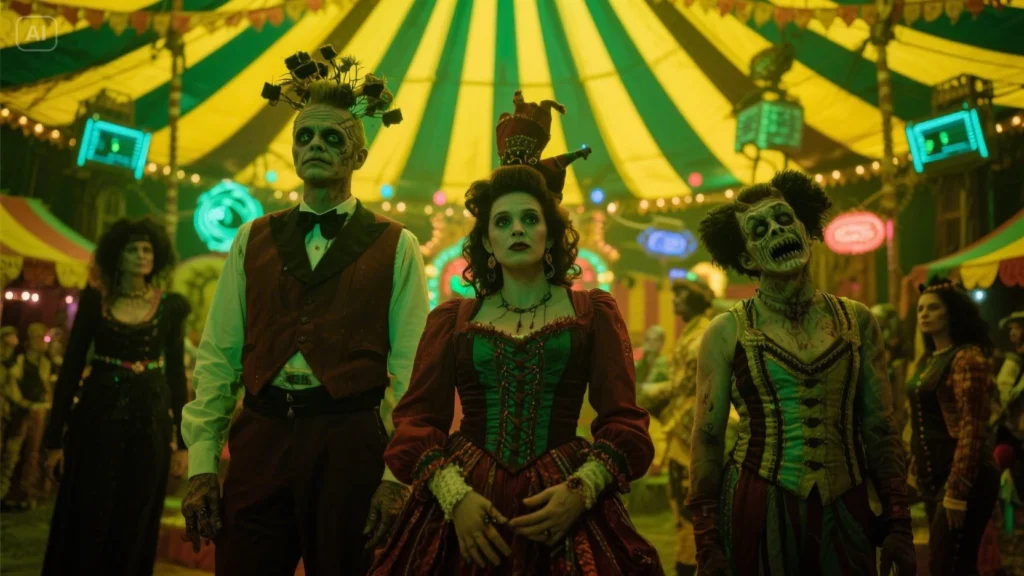
As the episode progressed, Rebecca recognized elements from various American Horror Story seasons. The twisted carnival atmosphere reminded her of the American Horror Story Freak Show cast and their tragic performances. The psychological manipulation echoed themes from Murder House and Asylum, while the technological horror aspects seemed pulled from more recent seasons.
But this episode felt different—more personal, more invasive, more real.
The collector explained his methodology in disturbing detail. He targeted true horror fans, people who understood the genre’s power to blur reality and fiction. He studied their viewing habits, their emotional responses, their willingness to seek out increasingly extreme content.
“Horror fans are the perfect subjects,” he explained while adjusting controls on a complex panel of switches and dials. “They’ve already trained themselves to suspend disbelief. They want to be scared. They actively seek out fear, which makes my job considerably easier.”
His collection room contained hundreds of televisions, each showing different people in their homes, watching horror content alone. Rebecca recognized the universal posture of late-night horror viewing—people hunched forward, covers pulled tight, eyes wide with fascination and terror.
“You see,” he said, adjusting an antique television that showed Rebecca’s own apartment, “the best horror stories are the ones that follow you home. The ones that make you question what’s real.”
Rebecca spun around. Her own TV screen now displayed her bedroom from an impossible angle, as if cameras were hidden in places where no cameras could fit. The perspective shifted and moved, showing her from above, from the sides, from angles that defied architectural logic.
She could see herself on the screen, standing in her pajamas, staring at her own reflection in the television. The recursive loop was dizzying and nauseating.
The Truth About American Horror Story Season 13
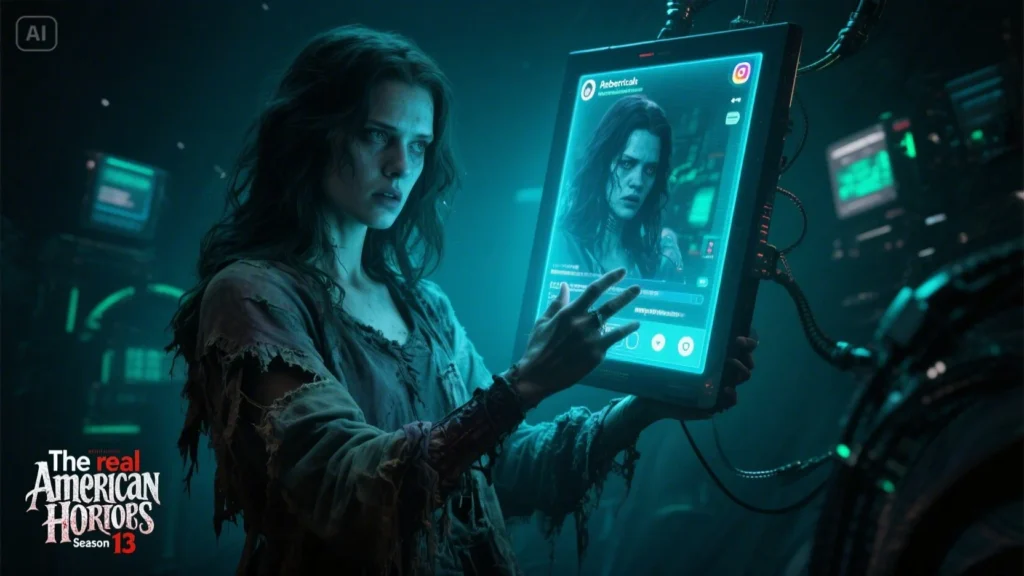
The real American Horror Story Season 13 had explored themes of digital horror and technological possession. Rebecca had written extensively about how the season examined humanity’s relationship with screens, social media, and digital entertainment. Her research had focused on how the show’s creators used familiar technology to create unfamiliar terror.
But this lost episode seemed to suggest that the research was incomplete, that there were layers of digital horror that even the show’s creators hadn’t fully understood or perhaps hadn’t dared to explore.
Rebecca frantically searched online, finding obscure forum posts about other viewers who had experienced similar encounters. Stories buried deep in Reddit threads and paranormal websites described people watching late-night horror reruns who suddenly found themselves trapped in endless loops of terror, their reality slowly consumed by the shows they loved.
One post from a user named “MidnightViewer” particularly chilled her: “The Collector doesn’t create new episodes. He records what happens to us. Every scream, every moment of terror, every sleepless night becomes content for his collection. We become the show we love watching.”
Another post detailed how entire families had disappeared after reporting strange late-night broadcasts. Local news stories mentioned unexplained missing persons cases, always involving people known for their love of horror movies and television shows.
The implications were horrifying. If true, then every American Horror Story episode, every moment of manufactured fear, was potentially feeding something that existed beyond the screen. The show wasn’t just entertainment—it was a hunting ground.
Rebecca’s academic mind raced through the possibilities. Was this some kind of psychological experiment? A viral marketing campaign gone wrong? Or was she experiencing something genuinely supernatural, something that defied rational explanation?
Breaking the Fourth Wall
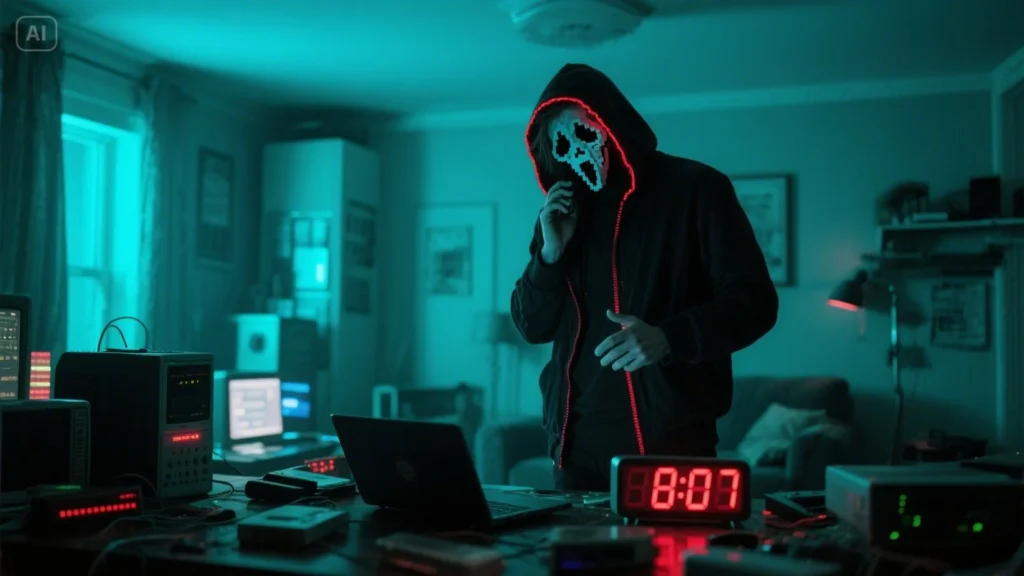
The collector’s voice suddenly echoed from her phone, laptop, and every electronic device in her apartment. Technology that should have been off sparked to life, each screen displaying his hollow-eyed face. Even her digital alarm clock showed his features in pixelated form.
“You’ve been such an attentive viewer, Rebecca. Your fear tastes exquisite. Much better than the casual watchers who change channels during scary scenes.”
She ran for her front door, her bare feet slapping against the cold hardwood floor. The handle wouldn’t turn. The deadbolt wouldn’t slide. Even the chain lock seemed fused in place.
Rebecca pounded on the door, screaming for her neighbors, but no sound seemed to escape her apartment. It was as if the space had been sealed off from the outside world, transformed into a soundproof recording studio.
The collector continued: “Your devotion to horror, your encyclopedic knowledge of every American Horror Story season 13, your willingness to seek out the darkest stories—it’s made you perfect for my collection. You understand fear in ways that casual viewers never could.”
Every mirror in her apartment now showed the collector’s room instead of her reflection. She could see other people trapped in similar spaces—viewers who had gone too deep into the horror genre, fans who had crossed some invisible line between appreciation and obsession.
Rebecca realized the horrible truth. Her passion for horror hadn’t just entertained her; it had marked her as prey. Her academic research, her detailed analysis of horror television, her willingness to watch content that others found too disturbing—all of it had been building a profile that made her an ideal target.
“Academic study of horror is particularly delicious,” the collector mused, his voice now coming from inside her own head. “The analytical mind trying to rationalize fear, to categorize terror, to understand what should remain mysterious. It creates such beautiful contradictions.”
The Collection Expands
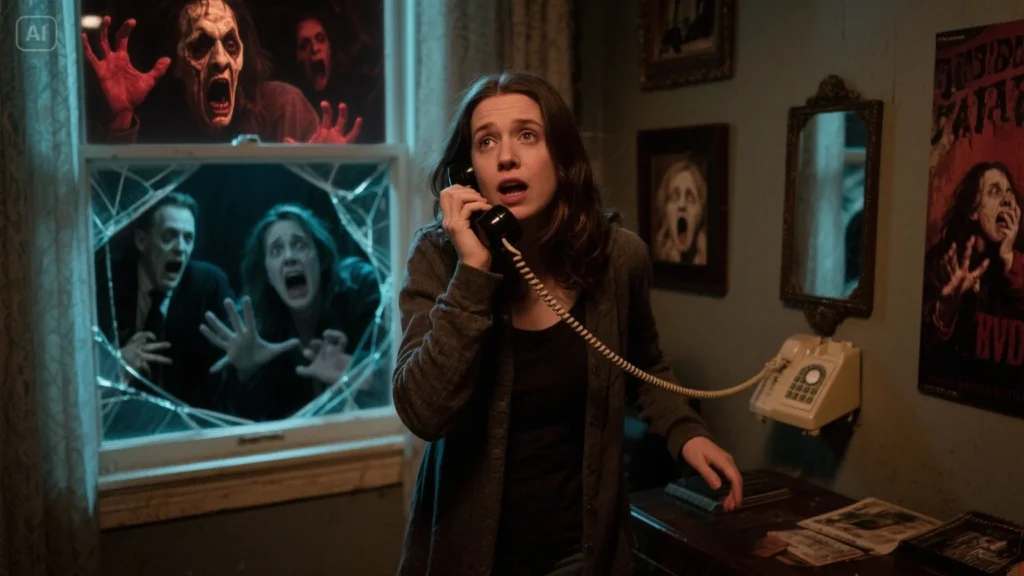
Rebecca discovered that escaping required more than just physical movement. The collector had created a psychological trap that fed on her own knowledge of horror tropes and storytelling devices. Every attempt to flee followed predictable patterns that he had already anticipated and countered.
She tried calling for help, but her phone only connected to recordings of other trapped viewers pleading for rescue. She attempted to break windows, but they showed scenes from classic horror movies instead of the outside world. Her apartment had become a stage set, and she was the unwilling star.
The collector revealed more about his process. He explained how he had been operating for decades, long before American Horror Story existed. The show had simply provided him with a more efficient way to identify and catalog potential victims.
“Television is the perfect hunting ground,” he explained. “People invite me into their homes voluntarily. They sit alone in dark rooms, making themselves vulnerable, actively seeking the kind of fear that I specialize in providing.”
He showed Rebecca his expanding collection—thousands of viewers from around the world, all trapped in their own personal horror episodes. Some had been collected from classic monster movies in the 1950s, others from slasher films in the 1980s, and many from modern horror series like the one that had originally attracted Rebecca.
“Each generation of horror fans believes they understand fear better than the previous one,” the collector noted. “They think they’re too sophisticated to be scared by ‘old’ horror, too analytical to fall for ‘cheap’ scares. That confidence makes them particularly easy to catch.”
The Final Scene
As dawn broke outside her windows—or what appeared to be windows but might have been more screens—Rebecca found herself unable to leave her apartment. Every mirror, every reflective surface, every screen showed the collector’s room. She could see other people trapped in their own spaces, all horror fans who had been too eager to find the next frightening story.
The collector smiled with genuine satisfaction. “Welcome to the real American Horror Story Season 13. The season that never ends, where every episode is personalized, where every viewer becomes both audience and performer.”
Rebecca’s reflection began to fade from the mirrors as she felt herself being pulled into the collection. Her academic research, her detailed notes, her passionate analysis of horror television—all of it became content for the collector’s endless anthology of terror.
She realized that her thesis would never be completed, not in the traditional sense. Instead, she would become a living case study in the psychology of fear, trapped forever in a recursive loop of horror that fed on her own expertise and passion.
The last thing she saw was her own empty apartment on the collector’s wall of screens, perfectly preserved and waiting for the next devoted horror fan to discover the episode that should never have aired.
Her research materials remained scattered across her desk, notes about American Horror Story Season 13 and viewer psychology abandoned mid-sentence, as if she had simply vanished in the middle of her work.
When Horror Becomes Reality
The American Horror Story franchise has always explored the thin line between entertainment and genuine terror. This tale reminds us that our fascination with darkness sometimes attracts attention we never intended to receive.
For horror enthusiasts, the genre provides a safe way to experience fear, to explore taboo subjects, and to confront our deepest anxieties from the comfort of our living rooms. But what happens when that safety is compromised? When the fourth wall dissolves completely?
Rebecca’s story suggests that our consumption of horror content might not be as passive as we believe. Every hour spent watching American Horror Story seasons in order, every late-night binge session, every detailed analysis of disturbing content—all of it creates a psychological profile that something might be monitoring and cataloguing.
The collector represents our worst fears about modern media consumption. In an age where algorithms track our viewing habits, where streaming services know our preferences better than we do, and where smart TVs can potentially watch us watching them, the line between audience and subject becomes increasingly blurred.
Whether the collector is real or merely a manifestation of our deepest fears about losing ourselves in the stories we consume, one thing remains certain: some episodes are better left unwatched, some stories better left unexplored.
The next time you settle in for a late-night horror marathon, consider Rebecca’s fate. Check your surroundings. Make sure you’re truly alone. And remember that in the world of American Horror Story Season 13, the most terrifying episodes are the ones that follow you home.
Ready for more spine-chilling tales that blur the line between fiction and reality? Read another horror story from our collection of supernatural encounters, or share your own paranormal experiences in the comments below. Subscribe to our newsletter for weekly doses of terror that will make you question what’s real and what’s just television—if you dare.
Word count: 1,847














